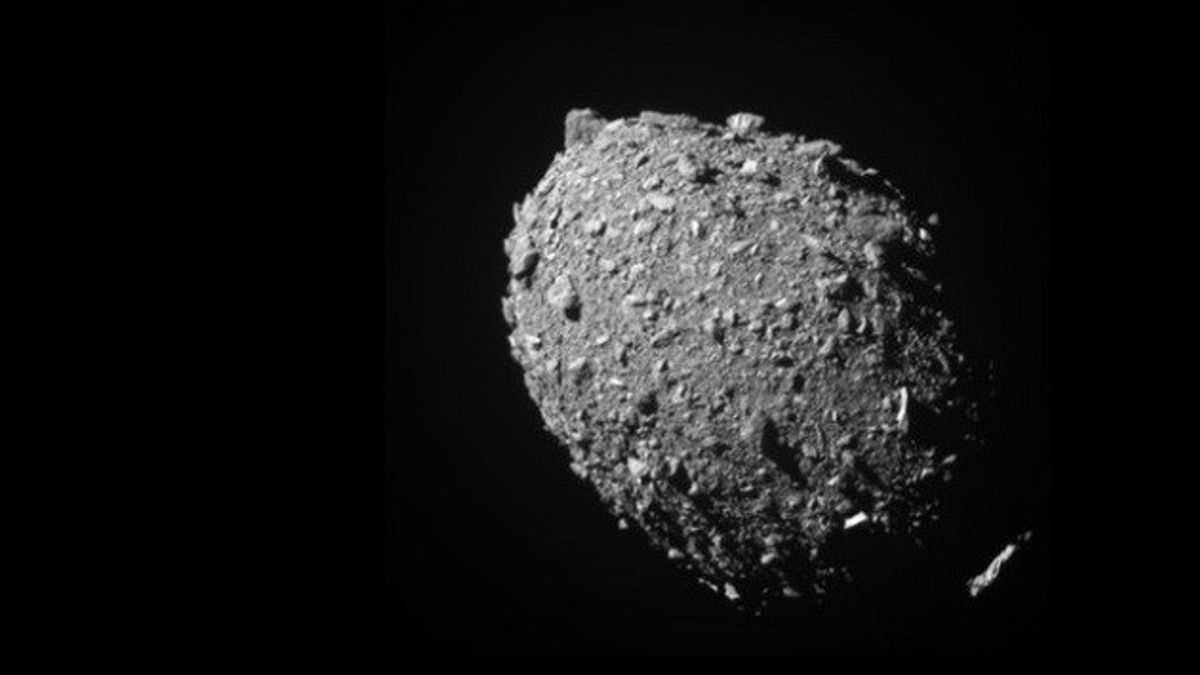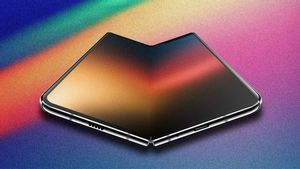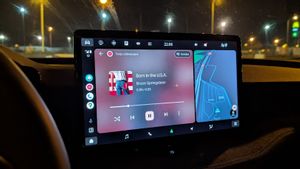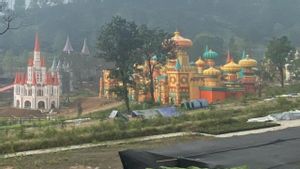JAKARTA - The Hubble Space Telescope managed to capture dozens of large rocks around the asteroid Dimorphos, which was deliberately hit by NASA's Double Asteroid Redirection Test (DART) spacecraft last year.
DART, which weighs 544 kilograms, has hit Dimorphos at a speed of 14,000 miles per hour on September 26, 2022. The goal is to change the asteroid's speed around the larger Didymos asteroid.
The results were seen when astronomers used Hubble Telescope photometry found a large rock clump that might have been shaken by asteroids when DART deliberately slammed itself into Dimorphos. Neither Dimorphos nor Didymos, poses a threat to Earth.
It appears that 37 large freely thrown stones have sizes ranging from three to 22 feet. The rock is away from the asteroid at a speed of less than half a mile per hour, roughly like the speed of a giant tortoise as it goes.
The total mass in these large detected stones is about 0.1 percent of the Dimorphos mass. However, it is likely that these rocks are not small asteroid fragments caused by collisions.
They are already scattered all over the asteroid's surface, as seen in the last image taken by the DART spacecraft, just two seconds before the collision with a distance of seven miles above the surface.
"This is a spectacular observation, much better than I expected. We see massive rock clouds carrying mass and energy away from the impact targets. The number, size, and shape of the stones are consistent with the massive rocks thrown from the surface of Dimorphos by collisions," said planetary scientist David Jewitt, who used the Hubble Telescope to track asteroid changes during and after the impact of DART.
"For the first time telling us what happened when you hit an asteroid and saw material coming out of the largest size. Those big stones are some of the faintest objects ever imaged in our Solar System," he added.
Jewitt said the event opened up new dimensions to study the results of the DART experiment using the upcoming Hera spacecraft from the European Space Agency (ESA), and arrived at a binary asteroid by the end of 2026.
Hera akan melakukan survei pasca-benturan detail terhadap asteroid yang ditargetkan, "Awan batu masih akan menyebar saat Hera tiba. Ini seperti sekelompok lebah yang berkembang sangat lambat yang pada akhirnya akan menyebar di sepanjang orbitan pasangan binariesilingi Matahari," ujar Jewitt.
It is estimated that Jewitt, the impact of which shook two percent of the large rock on the surface of the asteroid. Observations of the rock by the Hubble Telescope also provide an estimate of the size of the impact crater of DART.
"The stones could have been excavated from a circle of about 160 feet (spanish the football field) on the surface of Dimorphos," said Jewitt. Hera, in the end, will determine the actual size of the crater.
However, it is not clear how the large stones were lifted from the surface of the asteroid. They could be part of the ejecta plume photographed by the Hubble Telescope and other observatories.
اقرأ أيضا:
Or seismic waves from the collision may have shaken the asteroid, such as banging a bell with a hammer that could shake the rubble of the surface.
According to NASA, quoted Monday, July 24, Dimorphos may have formed from material poured into space by Didymos. The parent body is claimed to be rotating too fast or could have lost material from a glimpse of collisions with other objects, among other scenarios.
The loose material formed a ring that gravitationally merged into Dimorphos, making it a pile of rock debris flying and loosely united by the relatively weak gravitational pull.
Therefore, the interior may not be sturdy, but it has a structure more similar to a bunch of wine.
"If we follow those big stones in Hubble's future observations, then we may have enough data to describe the precise trajectory of those stones. And then we will see which direction they are rolling out from the surface," said Jewitt.
The English, Chinese, Japanese, Arabic, and French versions are automatically generated by the AI. So there may still be inaccuracies in translating, please always see Indonesian as our main language. (system supported by DigitalSiber.id)


















